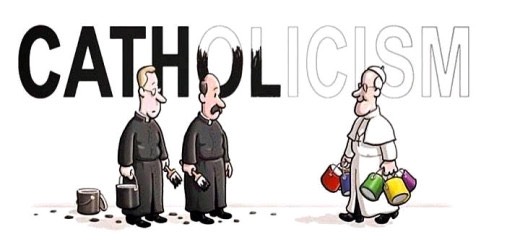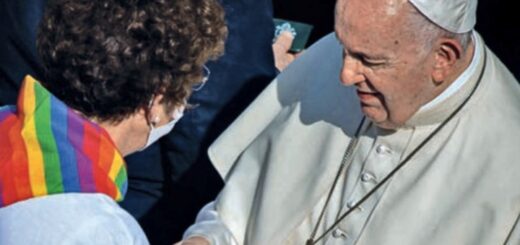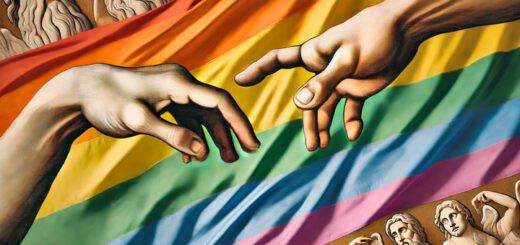Quando i matrimoni gay erano un rito della chiesa
Articolo Jim Duffy* pubblicato sul The Irish Times (Irlanda) l’11 Agosto 1998, liberamente tradotto da Michele Damiani
I matrimoni gay non portano alla poligamia come dimostrato da 6000 anni di storia dell’umanità. Negli Stati dove la poligamia è legale i matrimoni gay sono solitamente illegali. Negli Stati dove i matrimoni dello stesso sesso sono legali, la poligamia è illegale.
.
Una lunga tradizione di matrimoni dello stesso sesso
Since the churches fight the problem of homosexuality, a long tradition of marriages of the same sex indicates that the Christian attitude towards these unions has not always been "rectilinear" as it is suggested now. A Kiev art museum preserves a curious icon of the monastery of Santa Caterina on Mount Sinai depicting two chores toga. Among them, a traditional Roman pronubance (the best man) celebrates what, in a standard Roman representation, would represent a marriage between husband and wife. In the icon Christ is the pronubance and only one thing is unusual: the husband and wife are in fact two men. Is the icon suggesting that a homosexual marriage is consecrated by Christ?
The same idea seems shocking from the beginning. The final response comes from other sources concerning the two men depicted, s. Sergio and s. Bacchus, two Roman soldiers who became Christian martyrs.
Mentre l’accoppiata di santi, in particolare nella chiesa antica, non era insolita, l’associazione di questi due uomini fu considerata particolarmente vicina. Severo di Antiochia nel sesto secolo espresse che: <
In other words, he confirms what the previous icon implies were a homosexual couple who enjoyed a celebrated gay marriage.
The ancient Christian writers openly accepted their orientation and the respective relationship also, in an image that for a few modern Christian eyes could be at the limit of blasphemy, the icon has Christ himself as pronube: the best man superinates their gay marriage.
.
The surprising discovery of prof. John Boswell
After twelve years of research in the archives of the Catholic and Orthodox churches, the professor of History of the Yale, John Boswell, He discovered that, towards the end of the eighteenth century, there was a sort of Christian gay marriage. Despite this, the very idea of a Christian gay marriage appears inconceivable.
Contrary to the common belief, Christian marriage has not remained unchanged in times, but has evolved both as a concept and as a ritual.
Tra le varie intestazioni degli antichi documenti liturgici della chiesa (e chiaramente separati da altri generi di benedizioni non coniugali di bambini adottati o dati in affidamento) il prof. Boswell rilevò che, oltre alle cerimonie matrimoniali eterosessuali, c’erano riti intitolati <
The ceremonies described by Boswell have all the contemporary rituals of a wedding.
1. The community gathered in a church
2. The blessing of the couple in front of the altar
3. Their right hands united as in heterosexual weddings
4. The participation of a priest
5. The reception of the Eucharist
6. A next wedding banquet
All this is depicted in the frescoes of the time in the homosexual union between the Byzantine emperor Basilio I (867-886) and his partner Giovanni. These homosexual unions were also celebrated in Ireland between the end of the twelfth and the beginning of the thirteenth century, as documented by the historic Gerardo del Wales (Geraldus Cambrensis). Dr. Boswell lists in detail some ceremonies of homosexual unions found in the liturgical documents of ancient churches.
.
The attempt to rewrite the story
Un documento greco del tredicesimo secolo intitolato <
In un altro documento serbo-slavo del quattordicesimo secolo intitolato <
Boswell trovò documenti di unioni dello stesso sesso, che coprono un periodo dall’ottavo al diciottesimo secolo, in diversi archivi come quelli del Vaticano, a S. Pietroburgo, a Parigi, a Istanbul e nel Sinai e non è il primo a fare tale scoperta dal momento che il domenicano Jacques Goar (1601-1653) include tali cerimonie in una pubblicazione di libri di preghiera greci.
Mentre ai tempi dei romani l’omosessualità era di fatto illegale, solo a partire dal quattordicesimo secolo i sentimenti anti-omosessuali si diffusero nell’Europa occidentale, ciò nonostante le unioni dello stesso sesso continuarono ad aver luogo.
Nel 1578, nella chiesa di San Giovanni Laterano (tradizionalmente la chiesa parrocchiale del Papa) a Roma, ben 13 coppie furono <
Boswell academic studies are so detailed as to ask fundamental questions to the authorities of the modern Church and to heterosexual Christians on their position towards homosexuality.
For the church ignoring the evident test in its own archives would be from cowards. The attestations testify convincingly that there is no trace of that undeading and constant attitude towards homosexuality that the modern Church claims.
All this shows that in the last two millennia, for a long time, in the parish churches and in the cathedrals from Ireland in Istanbul and in the heart of Rome, through Christianity, homosexual relationships were accepted as valid expressions of a capacity, given by God, to love and commit themselves to another person, a love that could be celebrated, honored and blessed in the name of Jesus Christ and, through his presence.
.
* Jim Duffy is a political journalist and researcher.
.
Original text: When gay marriage was in rite






